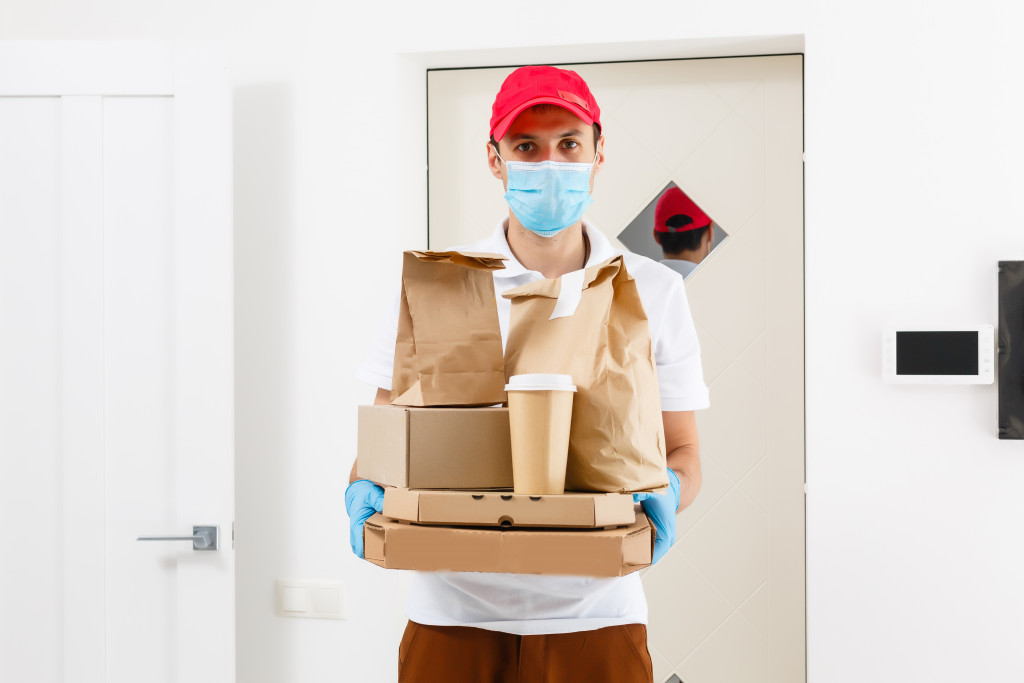How we shop and receive our groceries has changed drastically over the past few months. With the rise of food delivery apps and the current pandemic, many people prefer to have their food delivered rather than going out to the grocery store.
This shift in how we receive our food will have a ripple effect on the entire supply chain, from the farmers and manufacturers to the grocery stores and delivery drivers. In this blog post, we’ll explore how the future of food delivery will change the way we shop and the importance of the supply chain delivery process.
Food Delivery and the Global Market
The current pandemic has forced many restaurants to close their doors or switch to a take-out/delivery-only model. This has created a surge in demand for food delivery services. The global online food delivery market is continuously growing; from its $189.70 billion value in 2021, it is expected to expand even further, reaching a compound annual growth rate (CAGR) of 10.8% from 2022 to 2028 according to recent studies.
The main drivers for this market are the rising number of smartphone and internet users and the increasing trend for food delivery mobile applications globally. Additionally, people leading busier lifestyles result in greater demand for these services.
However, some regions’ high delivery costs and lack of awareness about these services are restraining market growth. Nevertheless, the increasing partnerships between food delivery companies and restaurants are expected to create new opportunities in the market over the forecast period.
How Will Food Delivery Change the Way We Shop?
The current pandemic has forced many people to change how they shop for groceries. With the rise in food delivery services, many people prefer to have their groceries delivered rather than going out to the store.
There are a few reasons for this shift. First, people are worried about going out in public and exposing themselves to the virus. Second, people lead busier lifestyles and don’t have the time to go grocery shopping. And third, many stores have been closed or have limited hours due to the pandemic. This shift in how we shop for groceries affects the entire supply chain, from the farmers and manufacturers to the grocery stores and delivery drivers.
The way we receive our food has and will still change in the future. We’ll likely still see an increase in home-delivered meals and a decrease in restaurant dining. And as people become more comfortable having their food delivered, we’ll see a rise in subscription-based meal delivery services.

With the shift to food delivery, managing the supply chain delivery will become even more important, as there will be a greater need for coordination between farmers, manufacturers, grocery stores, and delivery drivers to ensure that food is delivered fresh and on time.
Delivering food fresh and on time is a complex process that requires coordination between all the different players in the supply chain. Farmers need to be able to forecast demand and plan their production accordingly. Manufacturers must produce the food on time and package it properly for delivery.
Grocery stores need to stock the right amount of food, and delivery drivers need to be able to get the food to the customer quickly and without incident. Taking all of this into consideration, managing the supply chain delivery process will become even more important in the future of food delivery.
Communication and Collaboration
The future of food delivery will require a well-oiled supply chain that can adapt to changing demands. Farmers and manufacturers must be able to produce enough food to meet the needs of delivery services. In contrast, grocery stores and drivers will need to be able to get that food into the hands of consumers quickly and safely. The key to a successful supply chain is communication and collaboration between all links in the chain.
Speeding Up Delivery
One of the most popular methods for speeding up delivery times is third-party logistics (3PL) providers. 3PL providers are companies that specialize in managing all aspects of the supply chain for their clients. This includes everything from warehousing and inventory management to transportation and shipping. Using a 3PL provider can be a great way for businesses to outsource logistical needs and focus on other parts of their operation.
Another trend that’s currently reshaping the supply chain is the rise of e-commerce fulfillment centers. These warehouses are specifically designed for storing and shipping items purchased online. By locating these fulfillment centers closer to population centers, businesses can reduce shipping times and costs while maintaining high customer satisfaction levels.
All in All
The future of food delivery is shrouded in uncertainty, but one thing is for sure: how we receive our groceries will change drastically in the coming years. A successful supply chain will be efficient, reliable, and adaptable. Communication and collaboration between all links in the chain will be essential in meeting consumer demands.

